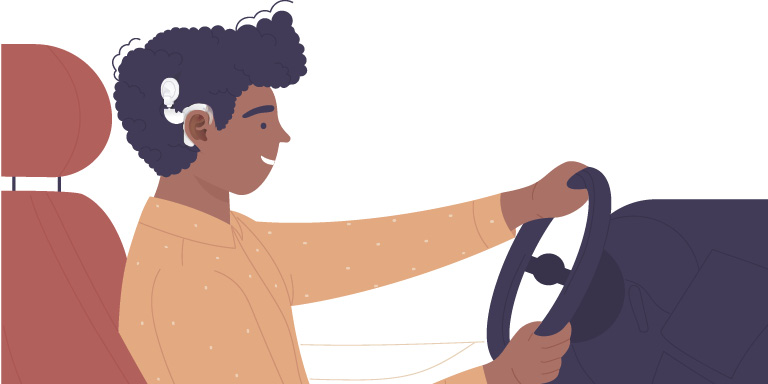Lowering Communication Barriers
Two experts discuss the practices implemented to better serve patrons who are deaf or hard of hearing
Sensitivity Training to Prepare for Encounters
Barbara Kelley, Executive Director, Hearing Loss Association of America
In the United States, 1 in 5 people are hard of hearing or deaf. There are several ways to communicate with patrons who are deaf or hard of hearing, and do not use an American Sign Language interpreter. Some are using hearing aids or other devices, such as speech-to-text apps that a more technically savvy person might use, which transcribes the words of the person who’s speaking into text. These workarounds are helpful, but they don’t account for people who are reticent about sharing that they are deaf or hard of hearing.
Depending on the state or county you’re in, when you enter the Department of Motor Vehicles you take a number that will be called over a loudspeaker. Even people with normal hearing have a problem detecting that. There should always be visual alerts as well. Officials who are wearing masks or working behind Plexiglas need to know that these affect sound, and certainly masks cut off any opportunity for lip reading, which a lot of people depend on. We should institute sensitivity training for personnel at the Department of Motor Vehicles, so that if somebody is hard of hearing, the official understands that they’re going to have to face the person and speak slowly and clearly.
Another example is when you’re giving instructions while the person’s eyes and the head are down to take a vision test, that’s going to present a communication barrier. The examiner shouldn’t assume that the person is not understanding, because some people are shy about saying, “You know, I wear hearing aids and you need to face me.” Sensitivity training and good policies will help staff be aware of situations where the patron might not hear them. If all else fails, have a notepad ready to write directions.
The same applies to traffic stops. When the officer comes up, the driver should say, “I wear hearing aids,” or “I have a cochlear implant. I need to read your lips, so speak slowly and clearly. And please pardon me if I ask you to repeat yourself. Please be patient with me.” The worst-case scenario is when somebody is pulled over, the driver doesn’t self-disclose that they are hard of hearing, and they are not following the directions. If I were an officer, I might wonder, “Is this person drunk? Is this person too old to be driving a car? Is this person not capable?”
Some of our HLA chapters have initiated in their communities Driver Alert cards that they can present to the officer that say, “I have a hearing loss. Please speak slowly and clearly.”
SHORE UP COMMUNICATION ACCESS
Howard A. Rosenblum, CEO and Director of Legal Services, National Association of the Deaf
Most state motor vehicle administrative facilities have communication barriers that make it difficult for deaf and hard of hearing people to obtain services. When interacting with deaf and hard of hearing people, many motor vehicle administrative officials are at a loss as to how to communicate with or share information with them. There is usually no coordinated way for deaf and hard of hearing persons to request communication access, such as through sign language interpreters.
Optimally, driver’s license examinations should be offered in American Sign Language (ASL), as has been done in a few states, such as Indiana, Nebraska and Virginia. In addition, even if there is no ASL option for the driver examination itself, state motor vehicle offices should have notice and information on how deaf and hard of hearing individuals can request qualified sign language interpreters for their driver exams.
Too often, deaf and hard of hearing people who encounter law enforcement during traffic stops often report that they are arrested for failing to comply with verbal instructions that they cannot hear and that are not communicated to them in any other accessible manner. This failure to ensure effective communication often leads to tragic outcomes, such as wrongful arrests, physical assault upon the deaf or hard of hearing person and even death of the deaf or hard of hearing person.
The National Association of the Deaf (NAD) has a resource page outlining communication access when interacting with the police and law enforcement. The National Association of State Agencies of the Deaf and Hard of Hearing and the NAD, along with stakeholders such as the National Black Deaf Advocates and other organizations, have been studying this issue for some time and are exploring options on resolving this systemic problem across the country. Part of the problem is that there are no national standards or requirements for police departments, and every department determines its own training and policies. This complicates any national approach to resolving the miscommunication that often happens between police officers and deaf people to tragic effect.




